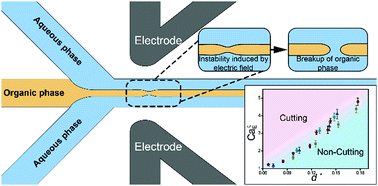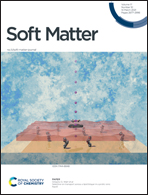Critical conditions for organic thread cutting under electric fields†
Abstract
Conditions for triggering the cutting of organic samples under an AC electric field are investigated in a microchannel to explore the strategy for organic sample manipulation. Based on the nature of triggering and developing instability at liquid interfaces, in combination with an equivalent electric circuit model, a novel electric capillary number method is proposed as a comprehensive critical condition for the cutting. We uncover the physics behind cutting and non-cutting of an organic thread for different electric frequencies, electric properties of fluid, and width of the organic thread. The critical time required and the critical cutting position are studied to offer guidelines for accurate cutting. Higher electric frequency and higher permittivity of the aqueous phase surrounding the organic phase can reduce the voltage required for cutting. In summary, the newly defined electric capillary number is proved to be a comprehensive criterion for determining the cutting phenomena, which is capable of considering the interfacial tension, the electric permittivity and the electric field strength applied. The results offer applicable references for achieving efficient and accurate cutting of organic samples in practical applications.



 Please wait while we load your content...
Please wait while we load your content...